Bitcoin Sees Largest Ever Decrease In Absolute Hashing Power
Bitcoin's difficulty is set to experience one of its largest ever decreases as hashing power leaves the network. How will BTC respond to this?

Bitcoin's rapid price drop earlier this month has driven miners to switch off their machines as mining becomes unprofitable for many.
After reaching an all-time high on March 1 2020, Bitcoin's hash rate has been consistently declining as miners leave the network.
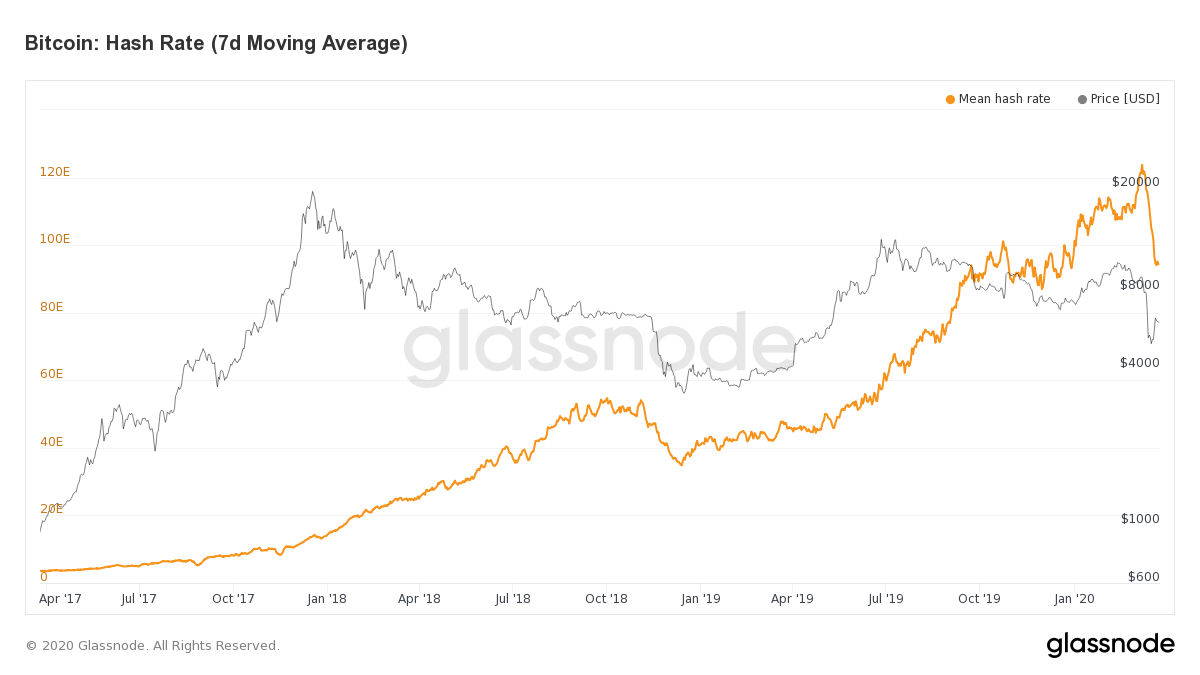
This has been by far the largest ever decrease in absolute hashing power in the history of the Bitcoin network.
Decreases like these are triggered by decreased mining profitability, which can occur during extreme price crashes. Lower BTC prices can cause mining overheads (i.e. infrastructure and electricity costs) to exceed revenue, meaning that it costs more to mine BTC than the miner can sell it for - especially for miners with inferior hardware or higher electricity costs. This leads these miners to leave the network, which decreases hash rate.
Bitcoin Blockchain Slows Down
This decrease in hash rate has caused the Bitcoin blockchain to slow down significantly, with blocks being mined up to 25% more slowly than the 10 minute target.
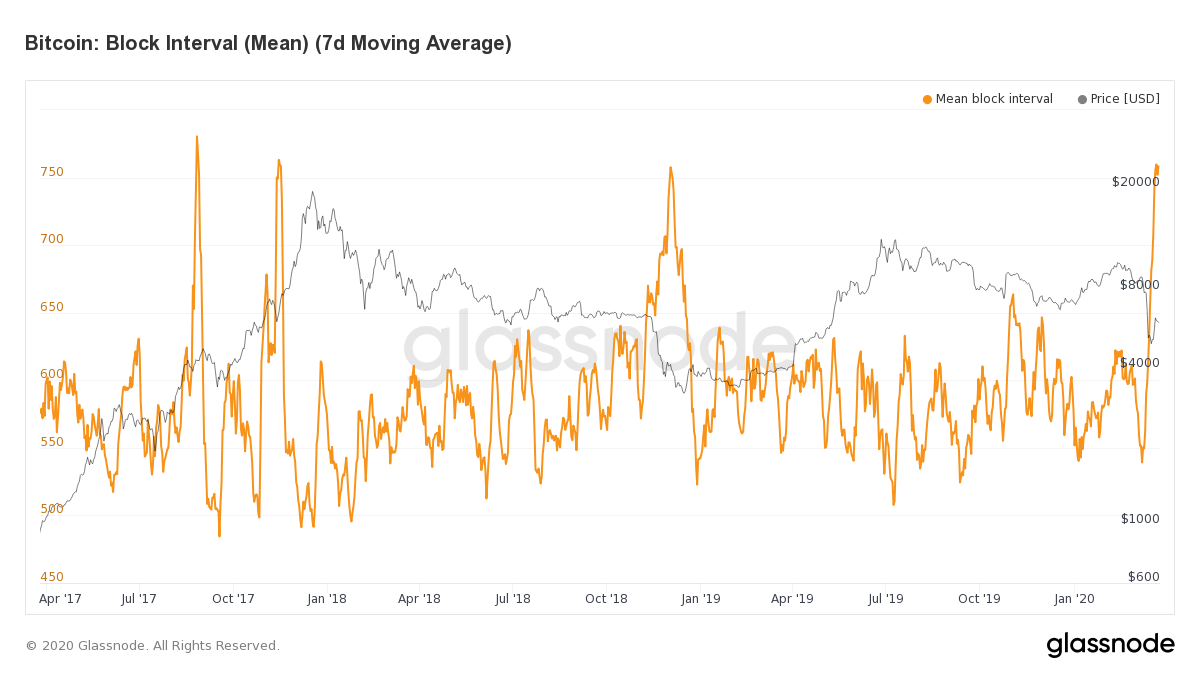
Bitcoin's mean block time has risen to levels unseen since the price decrease in late 2018 - now taking approximately 12.5 minutes (750 seconds) on average to mine a block.
Miner Revenue Takes a Hit
Miner revenue in BTC terms has seen a massive decrease as hashing power leaves the network. Less blocks means less block rewards, placing additional strain on miners.
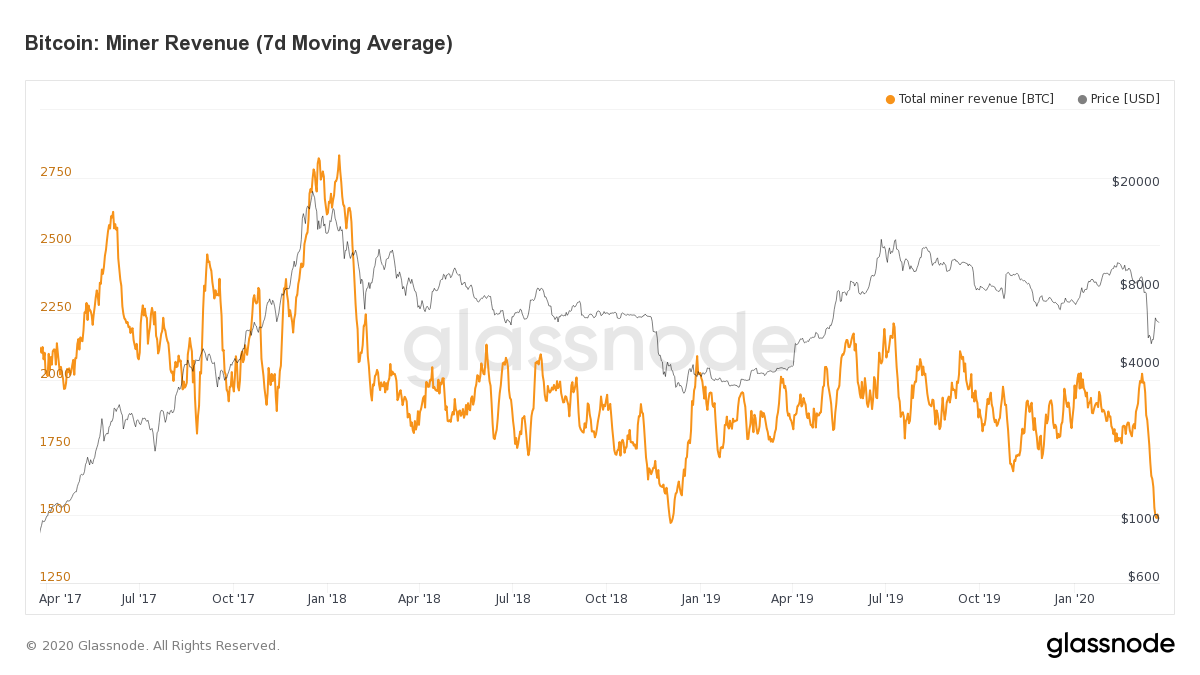
The lower price of BTC already means less revenue per block, but combining this with less blocks in total has resulted in USD miner revenue decreasing even more drastically.
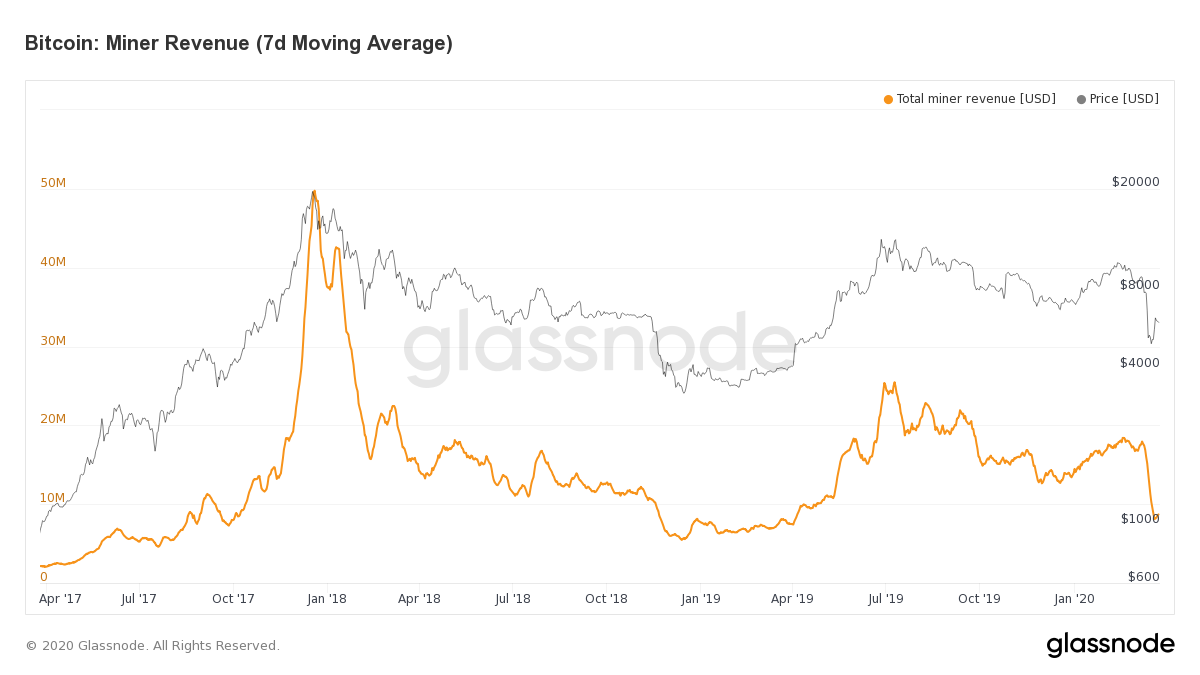
This situation can lead to a feedback loop when the price decreases too rapidly:
- Mining becomes less profitable/unprofitable
- Hash rate decreases as miners leave the network
- Less blocks are mined as hashing power decreases
- Revenue from block rewards decreases
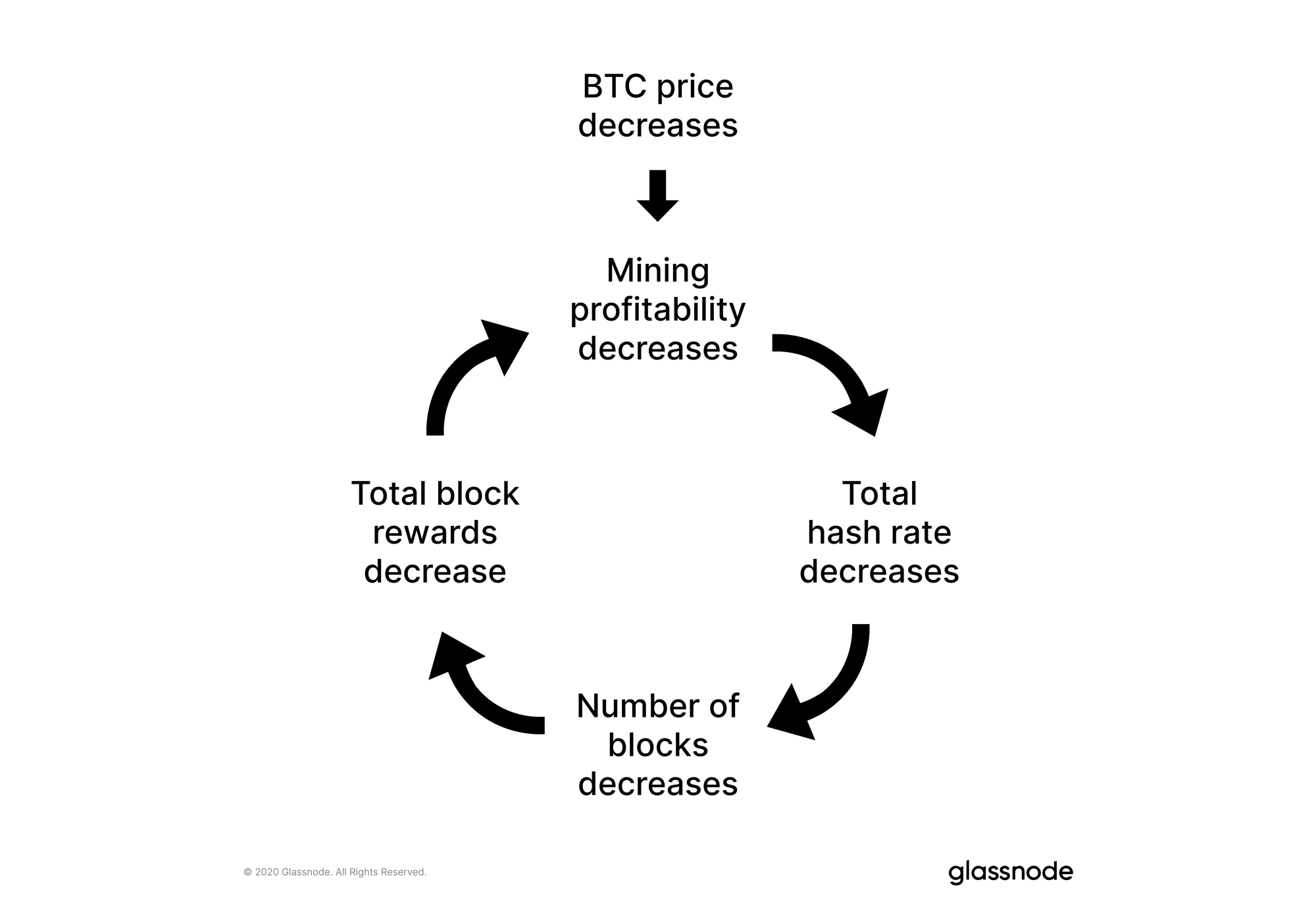
This leads to further attrition from the network, as more and more miners struggle to mine blocks and make a profit. This feedback loop is only broken when difficulty readjusts.
The Upcoming Difficulty Adjustment
Bitcoin's difficulty has been consistently increasing along with hash rate, with only a few meaningful decreases over the past several years.

Despite the plummeting hash rate, difficulty is still at an all-time high; it has yet to adjust after the crash, as slower block times have delayed the anticipated date of the next adjustment.
At this stage, taking the current hash rate into account, the next difficulty adjustment is expected to occur on March 25.
Difficulty is expected to drop by ~14.7%, making this one of the largest difficulty adjustments in Bitcoin's history.
This adjustment - along with BTC's rise back above $6k - will provide some much-needed relief for miners, many of whom will re-enter the market when mining becomes easier (and therefore more profitable) again.
What does this mean for the market?
As can be seen in this tweet by @100trillionUSD, large difficulty reductions have historically marked bottoms in the market:
9 years of #bitcoin difficulty adjustment: like clockwork pic.twitter.com/VEOBBw2OeZ
— PlanB (@100trillionUSD) November 12, 2019
When the price of BTC is so low that it is barely profitable or even unprofitable to mine, it has to go back up in order for the network to sustain itself. Combine this with the upcoming halving, and it becomes clear that BTC needs to see a significant rally in order for mining to continue.
The impact that a global recession and an event such as COVID-19 will have on Bitcoin is unprecedented and untested, and the way the market will respond is still unclear.
However, if you believe that BTC is here to stay (and we definitely do), then a price rally must be on the cards in order to keep the network alive.

- Follow us and reach out on Twitter
- For on–chain metrics and activity graphs, visit Glassnode Studio
- For automated alerts on core on–chain metrics and activity on exchanges, visit our Glassnode Alerts Twitter
Disclaimer: This report does not provide any investment advice. All data is provided for information purposes only. No investment decision shall be based on the information provided here and you are solely responsible for your own investment decisions.
